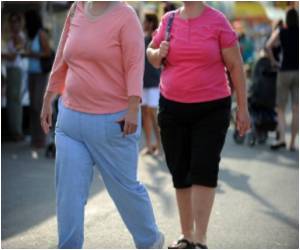Poor women who move from high-poverty to lower-poverty neighborhoods experience improvements long-term improvements in their health, namely reductions in diabetes and obesity, reveals study.

For the study, Ludwig and a team of scholars from around the country studied 4,498 poor women and children, who from 1994 to 1998, enrolled in a residential mobility program called Moving to Opportunity. The U.S. Department of Housing and Urban Development operated MTO in five United States cities — Baltimore, Boston, Chicago, Los Angeles and New York.
The MTO program enrolled low-income families with children living in distressed public housing. Families volunteered for the experiment, and based on the results of a random lottery, were offered the chance to use a housing voucher subsidy to move into a lower-poverty community. Other families were randomly assigned to a control group that received no special assistance under the program.
The study collected information during 2008-10 on families who had enrolled in the program 10 to 15 years before. The research team directly measured the heights and weights of MTO participants, and it also collected blood samples to test for diabetes.
At the time of follow-up, 17 percent of the women in the study's control group were morbidly obese (body mass index at or above 40), and 20 percent had diabetes. However, in the group of women who were offered housing vouchers to move to lower-poverty neighborhoods, the rates of morbid obesity and diabetes were both about one fifth lower than in the control group. "These findings provide strong evidence that the environments in low-income neighborhoods can contribute to poor health," said Ludwig.
The research team included another UChicago faculty member, Dr. Stacy Tessler Lindau, associate professor in obstetrics and gynecology, and an expert in urban health.
Advertisement
"This study shows that where a woman lives with her children may, in part, determine whether she develops serious, costly, life-shortening diseases like diabetes and extreme obesity. Giving a low-income woman the opportunity to move with her children to a less impoverished neighborhood appears to lower her risk of diabetes and extreme obesity," she said.
Advertisement
"The increase in U.S. residential segregation according to income in recent decades suggests that a larger portion of the population is being exposed to distressed neighborhood environments," they write in the paper. "Minorities are also more likely than whites to live in distressed areas."
"These results highlight the great importance of learning more about what specific aspects of the social or physical environment reduce the risk of diabetes and obesity; for example, greater access to grocery stores, more opportunities for physical activity, or feelings of greater safety and reduced psychological stress," said Ludwig.
"Given that diabetes and obesity are associated with a large number of health complications and higher cost for medical care, the findings from this study suggest that improving the environments of low-income urban neighborhoods might improve the duration and quality of life for the residents and lower health care expenditures," said another study co-author, Dr. Robert Whitaker, Professor of Public Health and Pediatrics at Temple University, and an expert on obesity and diabetes.
Source-Eurekalert









